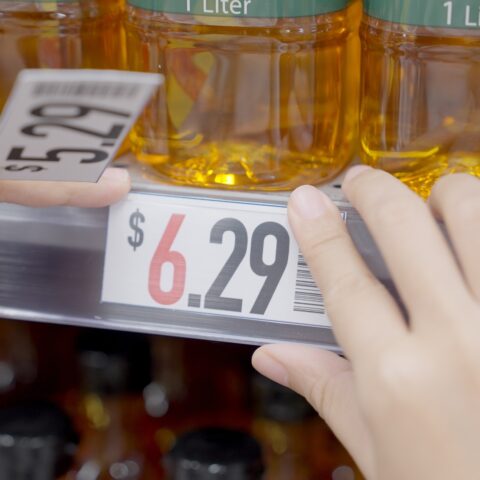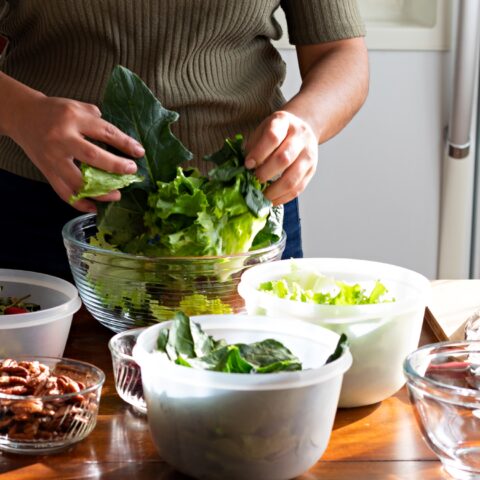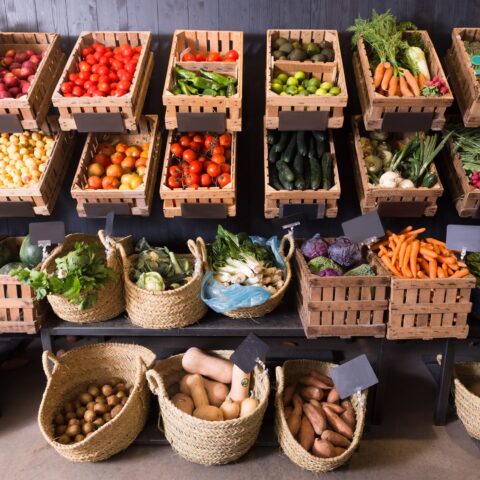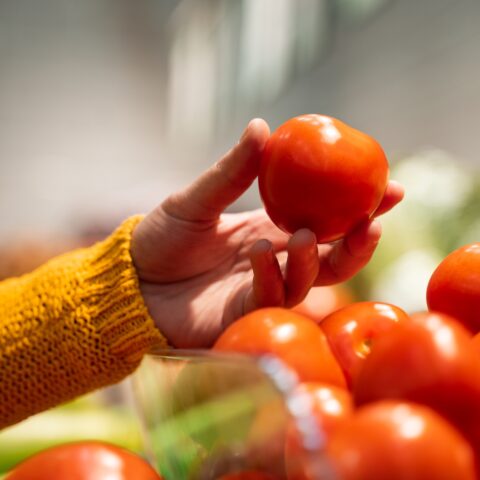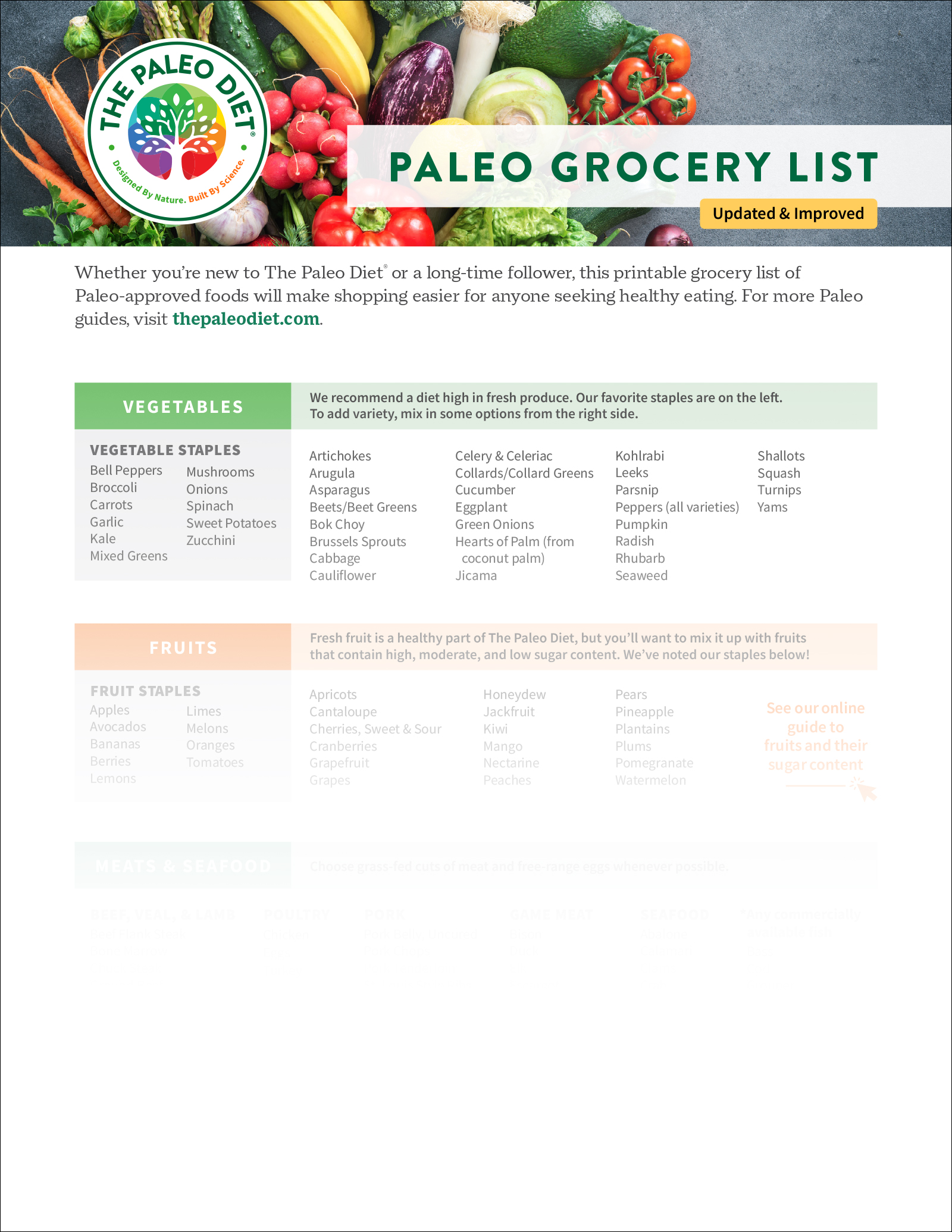How to Analyze Your Grocery Store Receipt to Improve Shopping Habits

We all have our own routine when it comes to grocery shopping. Some of us may scrutinize labels for the lowest price per ounce, while others peruse coupons and sales for the best deal of the day—or choose the same name-brand product for nothing more than familiarity. However we shop, our spending choices have the power to influence not just our individual health, but the behaviors of food manufacturers and larger food systems as well. And one of the best ways to check in with your spending habits is to analyze your grocery store receipt.
Save your last grocery receipt or two from an average shopping trip and use it to examine how you’re supporting your short-term health, longevity, and the food systems that brought the product to the shelf. In the following section, we’ll use our own examples taken from real products to show you just how to do this.
A Tale of Two Grocery Receipts
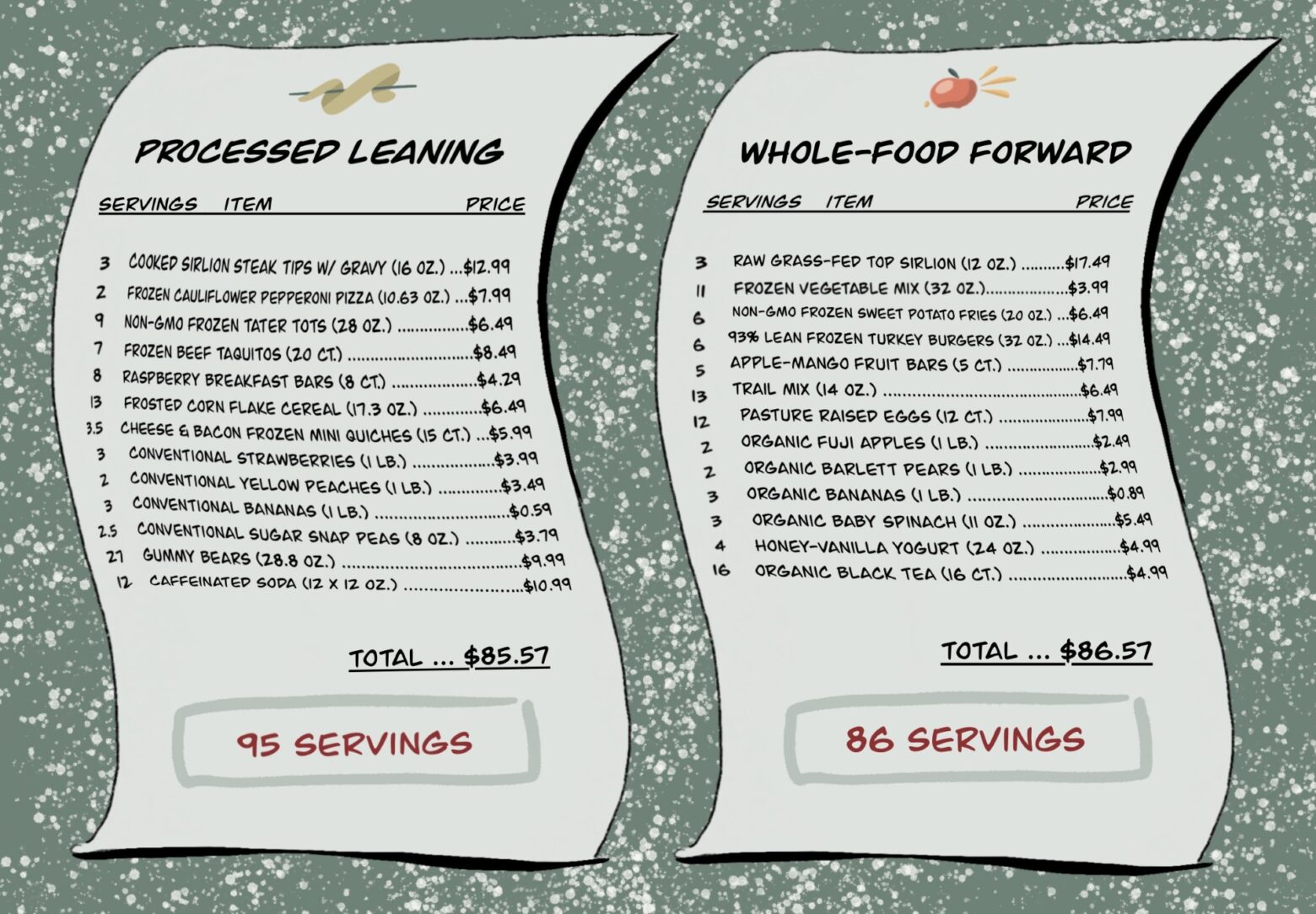
In the image above you can see two separate grocery store receipts. The items purchased are similar in nature and almost identical in total cost, yet vary greatly in nutrient density and in how some of the foods were sourced. The left receipt prioritizes processed foods but still makes some smart purchases with whole fruits and a non-GMO frozen product.
The receipt on the right prioritizes whole foods and has purchased a variety of whole fruits, vegetables, and proteins (both fresh and frozen). It is not completely unprocessed either, choosing several minimally processed foods and adding yogurt to their cart as well, which is typically categorized as ultra-processed.
Let’s analyze how each receipt compares in nutrients, serving sizes, health support, and environmental support.
Value per Serving
The Processed-Leaning Receipt has a total of 95 servings for $85.57. That amounts to about 92¢ per serving. Meanwhile, the Whole Food-Forward Receipt has a total of 86 servings for $86.57, or roughly $1.01 per serving.
Similar purchases, similar amounts, and only one dollar of total difference for a vastly different nutritional value. And though the Processed-Leaning Receipt does come out with more value per serving, it’s important to note that a whopping 27 servings alone are in a single package of gummy bears. With one snack taken out, the value per serving suddenly tips in favor of the Whole Food-Forward Receipt.
We’ll be the first to admit that generally the cost of eating healthier food can be more expensive. So, we were surprised to see the totals of both grocery store receipts were so similar, but there were some smart purchases that helped with the costs.
Seasonal produce tends to be less expensive, and the Whole Food-Forward Receipt mainly purchased fresh produce that was seasonal for the time the data was collected (September). Meanwhile, the Processed-Leaning Receipt did not pay attention to seasonality. The Whole-Food Forward Receipt also supplemented several fresh produce selections with frozen produce, which can also drive down costs.
In addition to the value per serving, we took each product and assigned it into one of four categories. Whole or minimally processed produce was divided into fruit or vegetable servings; and products that provided healthy, minimally processed fats and proteins were assigned to their own category. Finally, we categorized ultra-processed foods as products that did not closely resemble the original food source and/or contained a long list of ingredients with additives.
The number of servings is determined according to total servings in the product purchased. Here’s how each receipt compares.
| CATEGORY | PROCESSED-LEANING RECEIPT | WHOLE FOOD-FORWARD RECEIPT* |
| Servings of Healthy Fats & Proteins | 3 | 34 |
| Fruit Servings | 8 | 12 |
| Vegetable Servings | 11.5 | 20 |
| Ultra-Processed Servings | 72.5 | 4 |
Nutrient Yield
Using each product’s nutrition facts label, we took several key nutrients and multiplied the amount per serving by the total serving size to get a total yield for each nutrient. The numbers are reflected below.
| NUTRIENT | PROCESSED-LEANING RECEIPT | WHOLE FOOD-FORWARD RECEIPT |
| Total Fat (g) | 320.5 | 305.9 |
| Sodium (mg) | 15,345 | 4,358.2 |
| Fiber (g) | 87.5 | 105.8 |
| Added Sugars (g) | 1,094 | 136 |
| Protein (g) | 296.8 | 387.2 |
As you can see, the amounts of total fat are comparable. (Though we did try to collect data on trans fats, which can increase the risk of heart disease, we were only able to find them in one product, at 1 gram total yield. This was another surprise for us, but we are happy to see it!)
The Whole Food-Forward Receipt has considerably less sodium and added sugars than the Processed-Leaning Receipt, but more fiber and protein. Let’s break down what this means.
Health Costs Not Shown in Your Grocery Receipt
High consumption of ultra-processed foods like pizza, cereal, soda, and candy has been associated with metabolic disease and other adverse health outcomes. These foods tend to be high in sodium and added sugars (as reflected in the table above), which our bodies are evolutionarily primed to crave. The issue is that humans would rarely encounter sodium and sugar in hunter-gatherer societies, and the risk of overconsumption was low.
When we eat these nutrients in large amounts, such as with a modern Western diet, we are increasing our risk of issues like inflammation and metabolic disturbances, which can lead to chronic disease. Though the upfront cost or convenience of a food may appear less expensive in the short term, it can increase the risk of high medical costs due to chronic disease later in life.
Even “healthier” variations of a food may still be laden with high amounts of sugar and sodium. In the Processed-Leaning example, you may notice that the frozen pizza uses a grain-free cauliflower crust and uncured pepperoni—healthier features than traditional pizza. The brand even touts a lack of artificial flavors and unnecessary additives in their product. Yet, the amount of sodium per serving is 1,010 mg, more than any other item on either grocery receipt. (And remember the one product we found with trans fats? It’s this pizza.)
In comparison, the Whole-Food Forward example opts for a bag of frozen mixed vegetables, including cauliflower, which provides only 30 mg of sodium per serving.
We want to acknowledge that a bag of mixed veggies does not have the same flavor or texture as a pizza—but it’s one example of how replacing even a single heavily processed item with a whole food product can greatly reduce sodium intake and increase the number of nutrient-dense vegetable servings in your regular diet.
That being said, The Paleo Diet® does not require 100% adherence. When you eat Paleo 85% of the time or more, you can still experience most of the benefits and reach your health goals. So, if you want to enjoy a pizza once a week, we won’t stop you. But consider how you can take charge of your health by prioritizing whole foods over processed options in your regular grocery choices.
Environmental Costs Not Shown in Your Grocery Receipt
Processed foods affect more than just individual health outcomes. Corn, soybeans, wheat, and rice—all non-Paleo foods—were the top four edible crops in the United States that received the most agricultural subsidies in 2024.1 These subsidies incentivize farmers to continue growing such commodities and find new applications for food products—such as sweeteners, oils, starches, beverages, and alcohol.
Not only are these crops nutrient-deficient, but they are also often grown by monoculture, which depletes the health of the soil. The processing and packaging of the foods made with these commodities can be fossil fuel intensive as well.2
One way to tip the scales in favor of sustainable practices and whole foods is to vote with your grocery receipt. Whole-food choices can encourage greater crop diversity and maintain viable regional sourcing by demonstrating demand to farmers and food manufacturers.
In the Whole Food-Forward example, the receipt has grass-fed beef, organic fruits and tea, and pasture-raised eggs. When consumers buy more products based on how they were sourced and processed, it signals to food manufacturers what to focus on in the future.
How we shop informs what new products will end up on shelves; let’s make sure the products can support both our health and the environment.
Apply These Ideas to Your Grocery Store Receipt
Take some time to examine your own grocery receipt. See if there are healthier options that can provide more value per serving, such as buying organic tea instead of canned soda, or waiting to purchase certain fresh produce items until they are in season. Look at the proteins and see if you can afford to buy a more sustainable option, like regenerative, grass-fed, pasture-raised, or sustainably caught.
Now challenge yourself: Identify one ultra-processed item on your grocery receipt and resolve to replace it with a whole food-based item in your next shopping trip (see our article for more information on categorizing ultra-processed foods).
Don’t worry about trying to overhaul your entire shopping routine—just start with one item and see how you can incorporate it into your regular meals. As shown above, swapping just one processed item in your grocery cart can make a big difference in the nutrients provided.
Check in every once in a while to see how your grocery store receipt reflects your overall health choices. If you see room for improvement, make changes a little bit at a time. You don’t have to be perfect, but you can make small steps that will lead to bigger and bigger breakthroughs over time.
Resources
- USA Facts. (2019, June 4). Federal farm subsidies: What the data says. USA Facts. https://usafacts.org/articles/federal-farm-subsidies-what-data-says/
- Fuel To Fork – IPES-Food report. (2025, September 8). IPES-Food. https://ipes-food.org/report/fuel-to-fork/
Andrea Dehnke
Andrea is the Content Manager at The Paleo Diet and has experience working with several health and nutrition publications.
More About The Author
